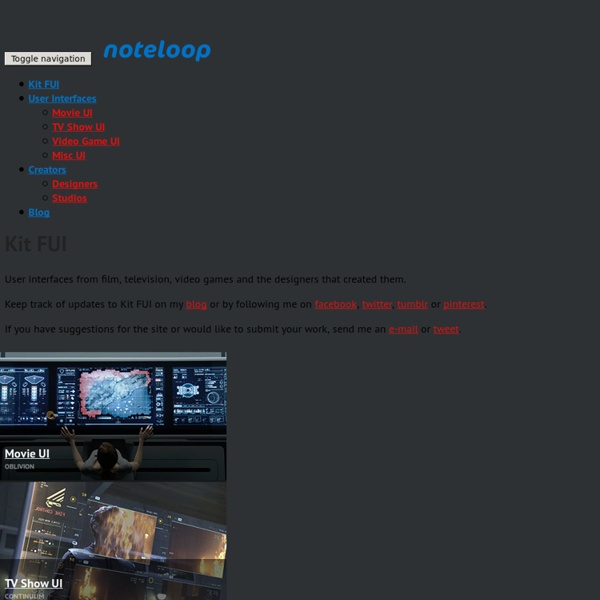



visual The Startup Universe displays and explores the relationships between startup companies and their founders and investors (Venture Capitalists) since 1990. Startups are grouped into 19 categories, based on the type of products or services they deliver. Each category is represented by an unique color. In addition to that, startups are visually sized according to the amount of financing they have raised, with each individual round displayed as well. Startups are positioned within the main interface on a horizontal interactive timeline, based on the year they were founded. By clicking on the left or right columns - Venture Capitalist or Founders' names - tangential stories can be explored: how many startups has a VC company funded and are there any time or startup category trends or patterns? Startups, VCs and founders can also be directly browsed by entering a name in the search field. All data comes from the CrunchBase API.
The Conversation Prism by Brian Solis and JESS3 EE - Digital City Portraits EE - Digital City Portraits Special commission by EE for the launch of 4G For the launch of 4G services in eleven UK cities, EE commissioned me to create a digital portrait for each city, formed from millions of bits of data as people talked and interacted about the biggest events of the day. Based on the same mathematics that create the head of a Sunflower, time explodes outwards from the centre with each point representing one minute giving a possible 4320 points – the number of minutes in three days – to cover the day before, during and after the launch of 4G. The three days worth of data was searched for various keywords that were hot talking points at the time, including Skyfall, Hurricane Sandy, money, together with localised subjects for each city. Even though each piece uses the same system to generate the images, each one is unique, both from a density of data point of view but also from what was being talked about. Read the case study on the M&C Saatchi PR site.
'Murmur' bridges physical and virtual using sound / @chevalvert @v3ga #raspberrypi Created using Raspberry Pi and openFrameworks, Murmur is a device that enables the communication between public and the projection by simulating the movement of sound waves, building a luminous bridge between the physical and the virtual. The device was designed to collect the murmurs of the public. Referred to “echo’s room”, making reference both to the audio effect achieved and to Greek mythology, it represents not only the key technique of the Murmur device, but also its magical aspect, turning sound waves into light waves. The project is a collaboration between Chevalvert, 2Roqs, Polygraphik and Splank. Project Page
Stupid Calculations An Interactive Look at Connected Devices in 2020 [INFOGRAPHIC] Whether it’s the Internet of Things and the rising connectivity among devices, or the use of wireless connections for machine-to-machine applications, you might be considering how this technology affects you and your organization. It’s important to know the sharing of valuable data by devices is expected to become an almost $1 trillion industry by 2020 , according to a report by the Carbon War Room. And in the next seven years, we’ll be measuring the growth in connected devices in more than just dollars. The following is a glimpse of what this technology might mean for your business in the future: That’s a lot of devices. For organizations employing M2M technology, the benefits may be seen across wide swaths of the business , such as: Machine operators responsible for the uptime of mission-critical assets Finance professionals responsible for calculating the ROI of purchases Procurement team members evaluating the agility of their suppliers Richard G.
Oranges and Blues — BoxOfficeQuant When I launched this site over two years ago, one of my first decisions was to pick a color scheme – it didn’t take long. Anyone who watches enough film becomes quickly used to Hollywood’s taste for oranges and blues, and it’s no question that these represent the default palette of the industry; so I made those the default of BoxOfficeQuant as well. But just how prevalent are the oranges and blues? Some people have commented and researched how often those colors appear in movies and movie posters, and so I wanted to take it to the next step and look at the colors used in film trailers. After sampling, I created the chart below to represent the distribution of those colors, so we could truly see how often they appear. This chart makes it visually clear that the oranges and blues truly dominate movie trailers, and which shades exactly are represented. Notes:
How Common Is Your Birthday? | The Daily Viz UPDATE: I’ve written a clarification about this post here. Please read it. A friend posted an interesting data table on my Facebook wall yesterday, which was my birthday. The data listed each day of the year with a ranking for how many babies were born in the United States on each date from 1973 to 1999. Sept. 16 was most common. Data source: NYTimes.com, Amitabh Chandra, Harvard University
Datavisualization.ch Selected Tools A World of Terror